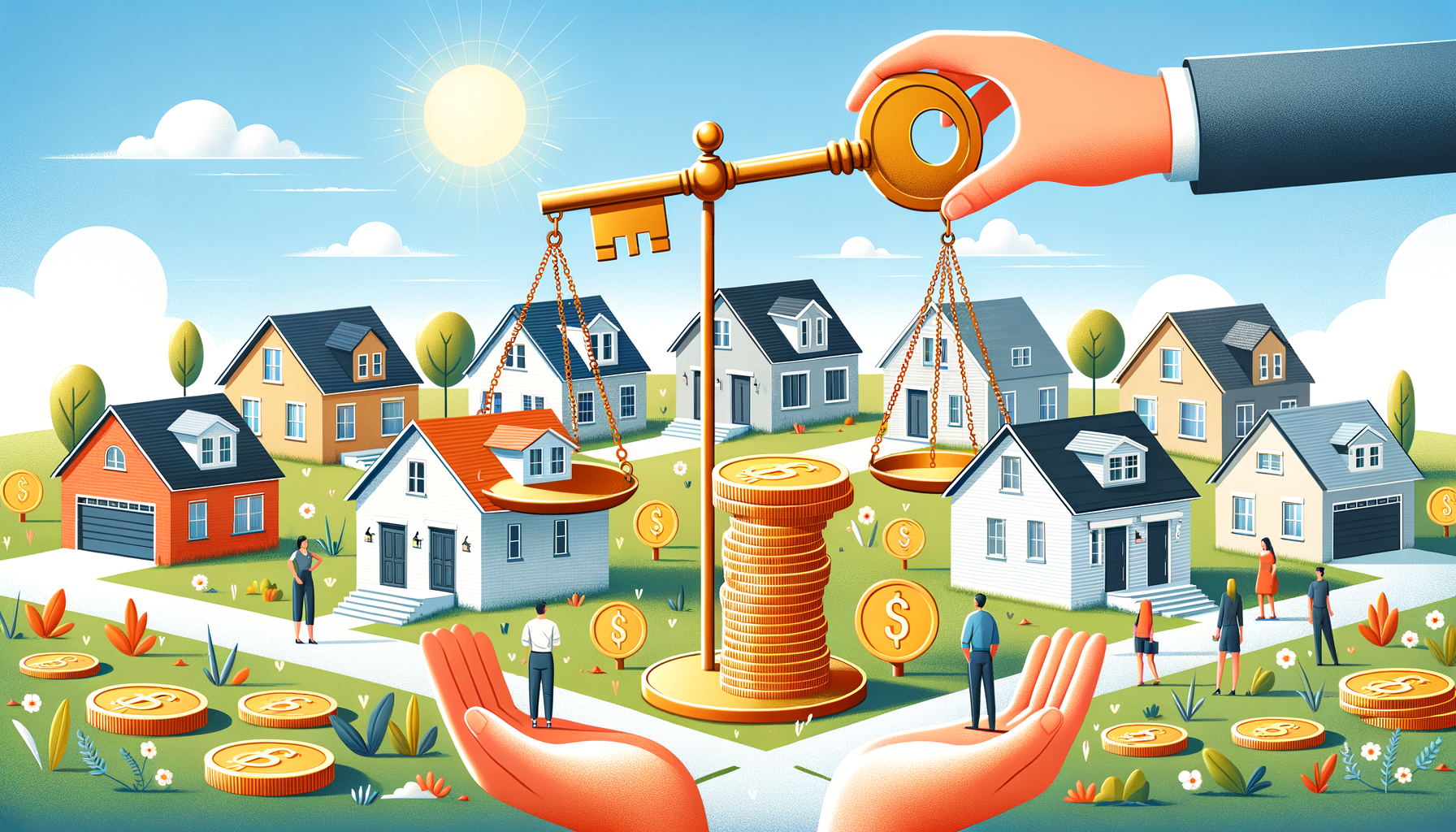“Capitalizing on Lower Mortgage Rates: The Key to Affording More Expensive Homes”

The modern real estate landscape has enjoyed a significant shift fueled primarily by historically low mortgage rates. Given this prominent trend, potential home buyers are finding they can consider homes that are financially more substantial than what they might have initially expected. A series of compelling factors are behind this shift.
In an era that accommodates low-mortgage interest rates, buying power—as it pertains to real estate—has magnified exponentially. A home that may once have appeared an unattainable luxurious reverie is transformed into a viable option for more and more families. This is primarily due to an enticing dip in mortgage rates which unlocks larger and more luxurious properties for potential buyers.
In essence, this implies that someone willing to pay $2,500 each month towards their housing expenses, and has stable income and decent credit history, could qualify for a substantially more expensive house than they could have previously imagined. This change alone significantly widens the scope of options, both in terms of property size and locale.
What is enabling this flexibility? It has a lot to do with a global financial micro-climate that has driven interest rates down and kept them at bay for an extended period. This environment means potential house buyers have access to low-cost capital, which justly increases their purchasing prowess in the real estate marketplace.
There is an array of economic elements that have set the stage for this occurrence. For starters, the complex interplay between international markets—the pervasive uncertainty punctuating our era—leads many investors toward the relative stability of bonds; an inherently conservative investment. Therefore, when bond prices ascend, yields decrease, which usually leads to a slump in mortgage rates. And this is the very trend we’re seeing right now.
Such a financial micro-climate represents a potent opportunity for prospective homeowners. It’s crucial for borrowers to thoroughly understand how this kind of economical ecosystem can benefit them when stepping onto the real estate ladder. To better understand this, one could imagine the following analogy: If a household were planning to buy a car priced at $25,000 some years ago, the financial circumstances of the current day might enable them to purchase a car whose initial price was $29,000, while still making the same monthly payments.
Meanwhile, there are other domino effects primed by plunging mortgage rates that warrant inspection. One primary effect is an increase in demand as would-be homebuyers gain more buying power. As subsequently, more people have access to larger homes, the demand for these residential properties escalates, potentially driving prices higher. This trend may enable a knock-on effect towards existing homeowners. As the value of homes increases, the existing homeowners may choose to take advantage of their increased equity by either selling their homes or refinancing their existing mortgages.
Another interesting change is that low mortgage rates can simultaneously stimulate home prices growth and make home owning more affordable. This may seem contradictory, but as with any financial market, these dynamics are influenced by a delicate balance of supply and demand factors. With growing demand and more affordable financing, home prices can rise due to volume, all the while property continues to remain within the affordable bracket for many new buyers.
Despite the favorable condition, potential buyers must remain cautious. Currently, the low-mortgage-rates luxury is enjoyed by those with solid financial standings and good credit scores. Some analysts believe that this trend might widen the already existing wealth gap as less affluent individuals and families may struggle to obtain any credit at all.
It’s important to note that while mortgage interest rates are an essential component influencing a home’s affordability, they’re not the only component. Property taxes, homeowner’s insurance, and homeowners association fees can also be significant contributors to the overall cost of homeownership.
Experts advise that potential buyers should fully contemplate and comprehend the ancillary expenses that accompany such a life-changing commitment. As prospective homeowners look forward to bearing the title of ‘homeowner,’ they must dig into a diligent financial analysis before leaping into the precipice of a larger mortgage.
On the other hand, the favorable rates have also given rise to a surge in the popularity of mortgage refinancing among existing homeowners. This can empower homeowners to reduce their monthly payments or reduce their loan duration, saving thousands throughout the mortgage term.
In conclusion, the current low-interest-rate environment presents a unique opportunity for potential homeowners. Affordability, importantly, often hinges on the mortgage rates influencing buyer purchasing power. While the low rates could adjust upwards in the future, buyers now can explore this grand opportunity—albeit completing a due diligence process—to set their foot on an otherwise potentially inaccessible real estate ladder. Increasingly, for many, the dream of owning a home they felt might be out of their financial reach starts to seem reachable again.
